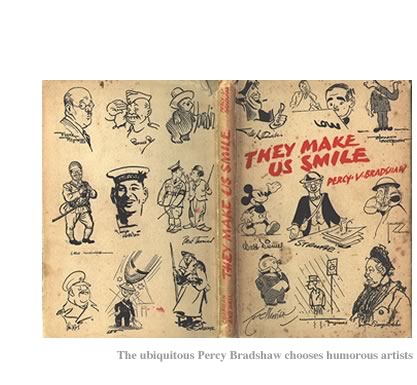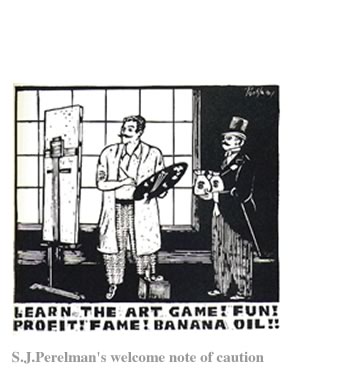THE
JOKE ; NARRATIVE TECHNIQUES AND STYLE.
"The sound of laughter is produced by a deep inspiration followed
by short spasmodic contractions of the chest and especially of the diaphragm.
Hence we hear of `laughter holding both his sides... From the shaking
of the body, the head nods too and fro. The lower jaw often quivers up
and down, as is likewise the case with some species of baboons, when they
are much pleased. During laughter the mouth is opened more or less widely,
with the corners drawn more backwards, as well as a little upwards; and
the upper lip is somewhat raised. During excessive laughter the whole
body is thrown backwards and shakes, or is almost convulsed; the respiration
is much disturbed; the head and face become gorged with blood with the
veins distended; and the orbicular muscles are spasmodically contracted
in order to protect the eyes.Tears are freely shed." " Charles
Darwin, beneath.
Todorov's categories of the function of laughter, 'Ritual Laughter in
Folklore'.see beneath
"Laughter
is a special type of conditioned reflex but it is a reflex that charcterises
man alone and has its own history.....each category or type of laughter
characterises peoples at a certain stage in their economic and social
develeopment."
1. The interdiction of laughter; in the land of the dead or mythic, the
living person gives himself away by laughing. It is forbidden to laugh
in the kingdom of the dead. "If you laugh Baba Jaga will catch us
both".
2. Laughter as the creator of life, "God laughed and gave birth to
the seven gods who control the world...When he burst out laughing, light
appeared... He laughed again and everything turned to water... With the
third burst of laughter, Hermes appeared..." The birth of a baby,
the planting of crops.
3, The Christian Debate: from The Name of the Rose ;
William(humanist) v Jorge(medieval fundamentalist).
William "You are laughing at laughter but you are laughing"
Jorge made a gesture of irritation. "Jesting about laughter, you
draw me into ideal debate. But you know that Christ did not laugh."
This section
looks at twentieth century story telling, the techniques of telling a
tale which ends in making people laugh; telling a story as in King
of Comedy Rupert Pupkin, the TV comic, Jerry Langford his idol,
Pupkin's Pride and Joy ; the embarassment of comedy. Rather than sustain
storytelling techniques from the past, the twentieth century distills
the story into a sequence of images.
How are those visual sequences composed ?
The medium of film allows us a particularly intimate perspective on the
construction of the visual joke. Many comedians have insisted on logic
and observation in their work.
Laurel and Hardy, techniques and composition. sequences from Brats
(1930)the bathroom scene. Stan Laurel as the creative force in the partnership.
Buster Keaton, Steamboat Bill Jr , 1928, the logic of
the hurricane. The use of cranes for destruction. The face of Keaton.
Jacques Tati, and the logic of unfolding in Monsieur Hulot's Holiday
1953; catching the pelt on the spurs; the logic of the towing
line as catapult.
W.C.Fields, The Bank Dick 1940, the awful family and
child abuse. (twice)
Sam Remi, Crime Wave, 1985, the comic strip. another
chance to look at the chase through a sequence of doors. the safest hallway
in the world. The woman pursued goes through the showroom of doors.
Chaplin, out-takes ; from Kevin Brownlow, The Unknown Chaplin
; the variations on the theme. The world turned backwards
Perhaps
the funniest joke is the unsuspected one;
Blake Edwards and the farting scene in the lift from The Pink Panther
.
laughter as a destroyer of the story. culminating in reading the news
story, the unexpected punchline.
And if I
have time, my favourite, "Pinback's Diary" from John Carpenter's
film, Dark Star , 1974.
ABOVE
a key list of what was considered funny and visual in 1942, Percy
Bradshaw's They Make us Smile.
ABOVE
RIGHT The writer Sid Perelman also produced illustrations for
JUDGE magazine between 1925 and 1931.
BOOKLIST
S.Freud, Jokes and the Psychopathology of Everyday Life various
editions.
Henri Bergson, Laughter, An Essay on the Meaning of the Comic
, Macmillan London 1911
Charles Darwin , The Expression of Emotions in Man and Animals,
Murray London 1904.
Vladimir Propp, Theory and History of Folklore , Manchester
Univ Press, Manchester 1984 see Chapter II 9, "Ritual Laughter
in Folklore".
Gilbert Highet, The Anatomy of Satire, OUP London 1962
James Agee, Agee on Film, Volume 1 , Putnam NUY 1983,
Comedy's Greatest Era
Kevin Brownlow, The Parade's Gone By , Abacus London
1973. silent comedy.
Umberto Eco, The Name of the Rose , Picador London
1984 (1980)
Anthony Anderson, The Man who was H.M.Bateman , Webb
and Bower Exeter 1982.
|















